Last Updated on July 11, 2024 by teamobn
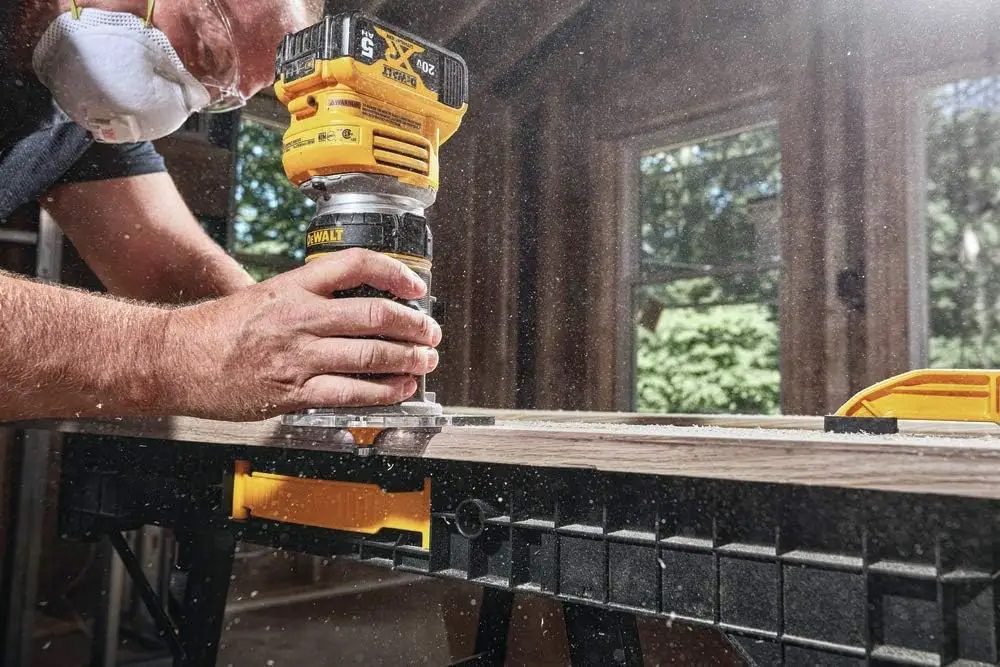
Find out how to alter your woodworking tasks using a cordless compact router. These routers provide unmatched mobility with the ease of cordless technology, enabling you to accomplish accurate cuts and stunning finishes without being constrained by a power cord. Learning how to use your cordless compact router is crucial for producing intricate designs and perfect edges, regardless of experience level in woodworking.
This guide will walk you through the fundamentals of selecting, using, and optimizing your router so that you always get the best results.
Contents
Cordless Compact Routers Basics
A useful power tool for DIYers, cordless small routers offer the accuracy and flexibility required for intricate jobs without the inconvenience of a tethered connection. Because of their mobility and ease of use, these routers are perfect for jobs in workshops as well as on-site. Smaller and lighter than its conventional counterparts, cordless compact routers are ideal for areas where a full-sized router would be inconvenient and enable more complex operations.
Moving about your workstation freely is one of the main benefits of using a cordless small router. Working on huge pieces or outside presents a variety of opportunities because you’re not limited to the closest power outlet. Furthermore lowering the possibility of mishaps, the absence of a power cord makes your workplace safer and more productive.
Think on important aspects like motor speed, battery life, and adaptability when selecting a cordless small router. Longer battery life guarantees you can finish jobs without stopping often to recharge, and adjustable speed settings give you more control over various materials and applications. Furthermore, fast task switching depends on easily adjustable settings, which guarantees that your projects are not only excellent but also productive.
Setting Up Your Cordless Compact Router
It takes careful setup of your cordless small router to get accurate and safe cutting. The first setup—unpacking and getting your router ready for use—will be covered in this part.
These instructions will help you to make sure your cordless small router runs at its optimum and give you the accuracy and efficiency you need for your woodworking tasks.
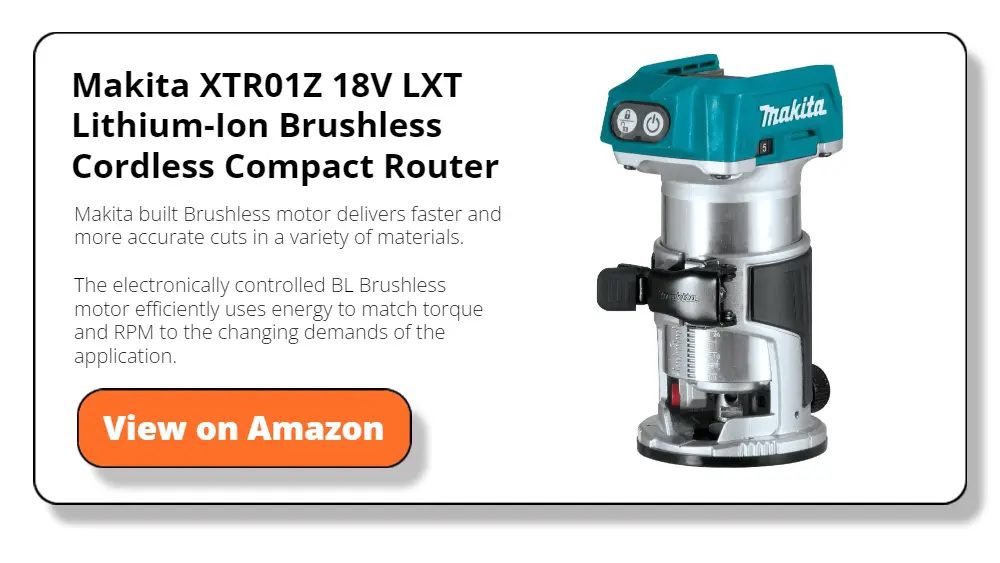
Guidelines and Safety Measures
Give safety first priority before operating your cordless little router. Never leave home without safety eyewear and hearing protection.
Sort through any extraneous stuff on your workstation and fasten the material you’ll be working on. Getting a feel for the weight and balance of your router is also best achieved by handling it without the power on.
Finding the Correct Bits for Your Project
The success of your project depends on selecting the correct bit. Your intended cut and the material you are cutting will determine the kind of bit you need. It can help most novices to begin with a set of frequently used bits, such as round-over, rabbeting, and straight bits.
Before starting any work, double-check that the bits are firmly fastened to your cordless compact router. This stage keeps the parts from coming free during use, which can cause errors or mishaps.
Carefully and meticulously arranging your cordless compact router will help you to get the most out of its lifespan. Safe operation of your router is guaranteed by proper setup, which also guarantees its readiness to perform a range of precise woodworking jobs.
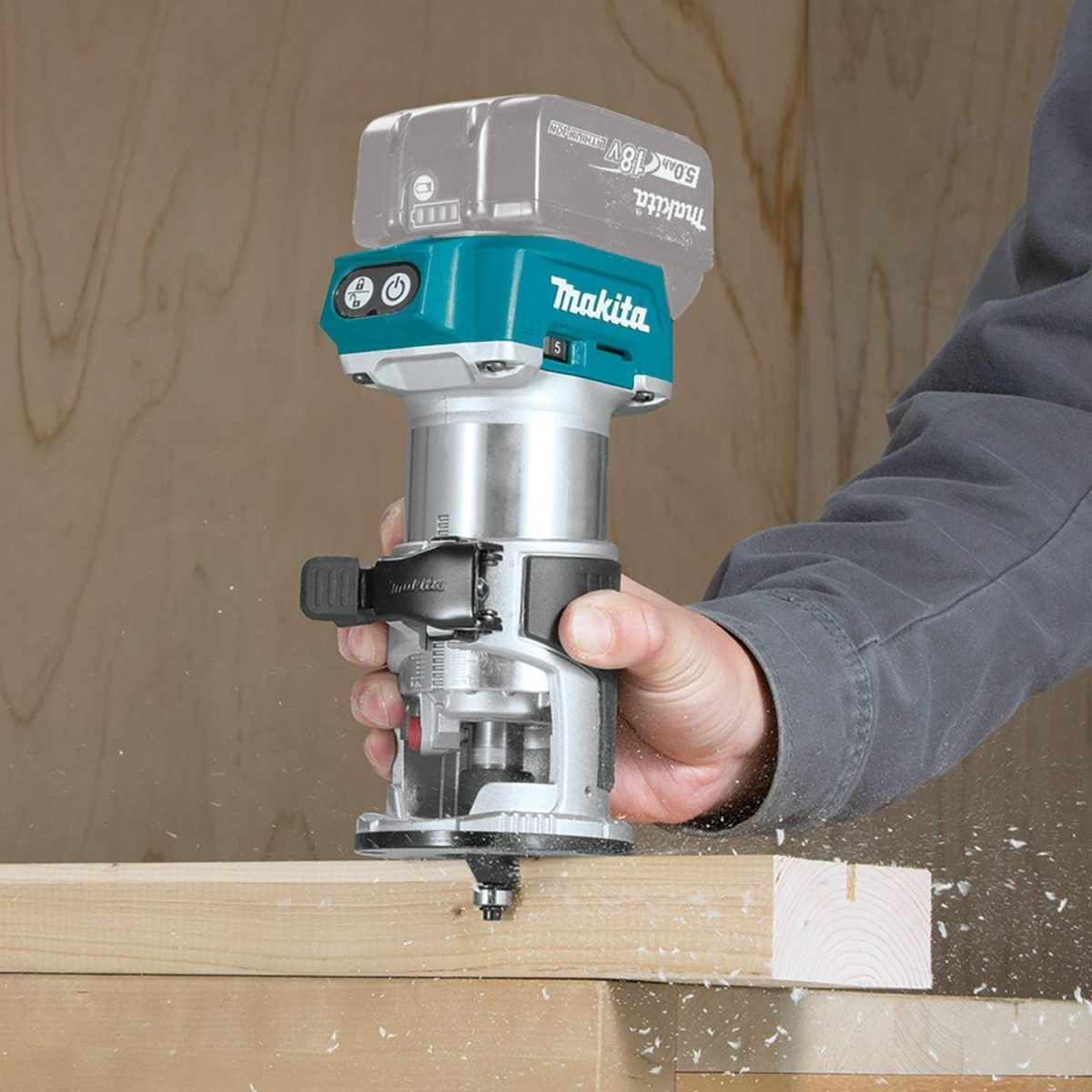
Basic Techniques for Using a Cordless Compact Router
Mastering the basic techniques for using your cordless compact router is essential to harness its full potential. This section provides guidance on how to effectively handle and operate your router, ensuring smooth and precise cuts on a variety of materials. By developing these foundational skills, you can elevate the quality of your woodworking projects and enhance your confidence in using this versatile tool.
How to Properly Hold and Maneuver Your Router
Proper grip and control are key to successful routing. Hold your cordless compact router with both hands for stability, with one hand on the main handle and the other on the knob or second handle.
Ensure your stance provides balance and allows you to apply consistent pressure throughout the cut. Move the router in the opposite direction of the spinning bit, which is typically left to right. This technique, known as climb cutting, helps maintain control and precision.
Techniques for Smooth and Even Cuts
To achieve smooth and even cuts, start with setting the correct depth of the bit. Use the router’s depth adjustment feature to set the bit slightly deeper than the material thickness.
Begin your cut by plunging the router into the material at the starting point, then smoothly guide the router along your marked path. Keep a steady feed rate; moving too slowly can burn the material, while moving too quickly can result in an uneven cut. Practice on scrap pieces to perfect your technique and speed.
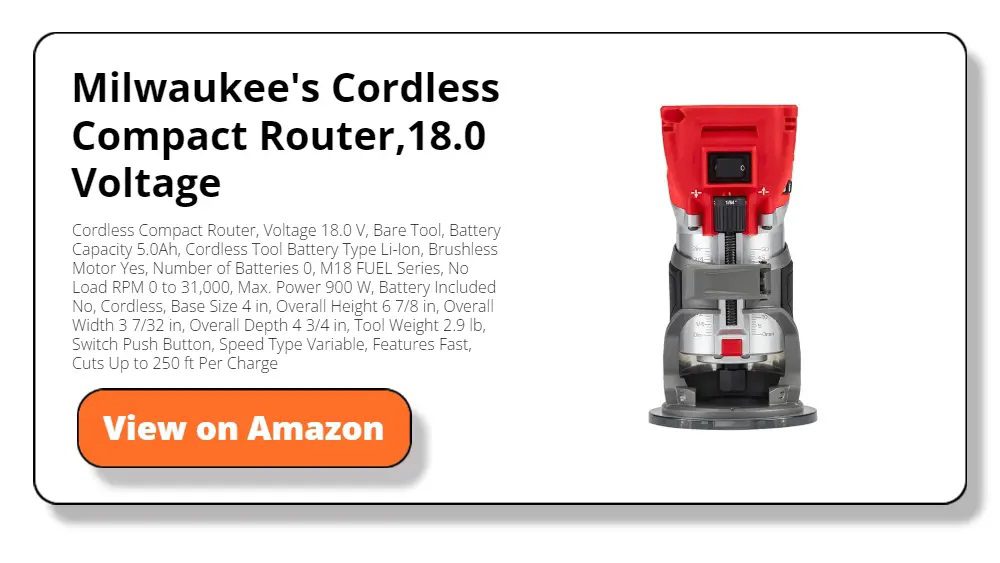
Adjusting Depth and Speed for Different Materials
Different materials require different routing techniques, particularly in terms of depth and speed. For harder materials, such as hardwood, decrease the speed to prevent burning and use multiple shallow passes to reach the desired depth.
For softer materials, like plywood, you can use higher speeds and fewer passes. Always adjust your router’s speed according to the manufacturer’s recommendations and the specific bit you are using. Regularly check the bit for signs of wear and replace it as needed to maintain the quality of your cuts.
Ensuring Clean Edges on Breakout-Prone Materials
When routing materials prone to splintering or chipping, such as certain types of plywood or laminates, it’s crucial to prevent breakout. One effective method is to use a backing board. Place a sacrificial piece of wood behind your workpiece to support the material fibers as the bit exits. This approach helps in achieving clean, crisp edges without any tear-out.
Using a Router Table for Enhanced Stability and Control
For projects requiring high precision, consider using a router table. A router table stabilizes your cordless compact router upside down, allowing the workpiece to be moved over the router instead of moving the router over the workpiece. This setup is particularly useful for small or delicate pieces that are difficult to control by hand. It also enables more consistent, repeatable cuts and can be advantageous for mass production of parts.
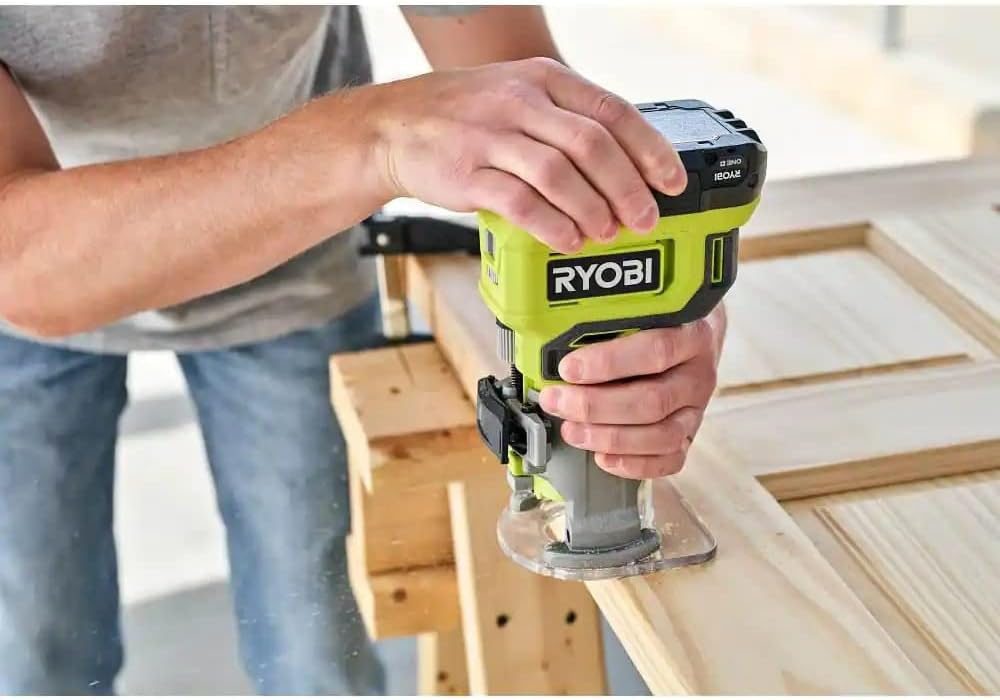
Implementing the Use of Jigs for Repetitive Cuts and Patterns
Jigs are invaluable for ensuring consistency and accuracy in repetitive tasks. Whether you’re creating multiple pieces of the same shape or executing complex patterns, a jig can serve as a physical guide to direct the router’s path. Designing custom jigs for specific projects can save time and reduce errors, especially when precise alignment or intricate cut-outs are required.
Managing Dust and Debris for a Clear Work Area
Effective dust management is essential when using a cordless compact router. Excessive sawdust can obscure your view of the cut line and pose a safety hazard.
Many cordless compact routers come with built-in dust extraction ports that can be connected to a vacuum system. Always ensure that your dust extraction system is functioning properly before starting your routing, and clear the area frequently to maintain visibility and accuracy.
With these basic techniques, you can start to explore the full range of capabilities offered by your cordless compact router. Developing a solid understanding of how to handle and adjust your router will lead to more efficient and effective woodworking projects.
Advanced Routing Techniques
Advancing your skills with a cordless compact router opens up a world of possibilities for intricate woodworking projects. This section delves into sophisticated routing techniques that can elevate your craftsmanship to professional levels.
By mastering these advanced methods, you’ll be able to execute complex designs and detailed finishes that truly stand out.
Creating Dovetails and Inlays with Precision
Dovetail joints are a hallmark of fine woodworking, and creating them with a cordless compact router requires precision and practice. Use a dovetail bit and a matching template to ensure consistent and tight joints. For inlays, select a router with a plunge base to control the depth accurately. Precision is key, so take your time to adjust the router settings and practice on scrap wood before applying these techniques to your final project.
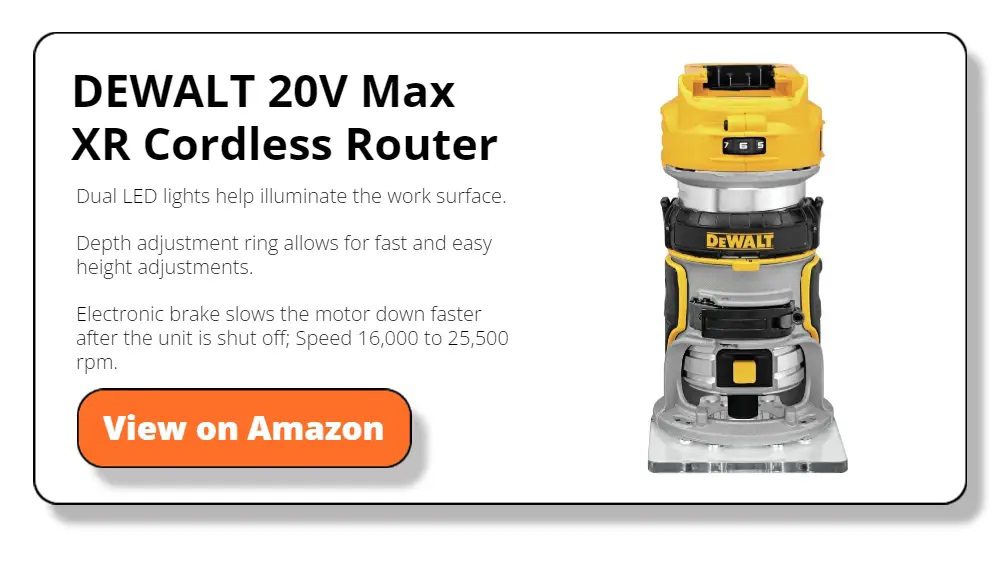
Tips for Using Templates and Jigs
Templates and jigs are crucial for reproducing intricate patterns or multiple copies of a part. When using your cordless compact router with templates, secure both the template and the workpiece to prevent any movement during the routing process. Use router bits with guide bearings or set up a guide bushing on your router base. This setup ensures that the router follows the template precisely, resulting in clean and consistent cuts.
Dealing with Challenging Cuts and Materials
Some projects may involve materials that are particularly hard or abrasive, or cuts that are complex and intricate. When facing these challenges, your cordless compact router can be an invaluable tool if handled correctly. Opt for carbide-tipped bits that can withstand tougher materials. Additionally, use a variable speed setting to adjust the router speed based on the material’s hardness. Slow speeds are generally better for harder materials to prevent burning and bit wear.
Edge Profiling and Artistic Detailing
Edge profiling is an essential skill for adding decorative touches to your projects. With your cordless compact router, you can create a variety of profiles such as ogees, coves, and chamfers. For artistic detailing, use specialized bits like V-groove or round nose bits to carve intricate patterns and motifs into the surface of your workpiece. Practicing these techniques will enable you to add personalized and professional finishes to your projects.
Flush Trimming and Perfect Alignment
Flush trimming is crucial when you need to trim overlapping edges or layers precisely. Using a flush-trim bit in your cordless compact router, align the cutter with the bearing to the template or an already cut section. This technique is perfect for veneer or laminate work, ensuring that the top layer aligns perfectly with the underlying material without any protruding edges.
Controlled Plunge Cutting
Controlled plunge cutting is vital for creating interior cutouts without an entry point from the edge of the material. Equip your cordless compact router with a plunge base and select a straight or spiral bit depending on the desired cut quality. Carefully adjust the depth stop for the specific depth required and use a steady hand to lower the router into the workpiece, following your marked guidelines. This method allows for clean and precise internal cutouts, ideal for vents, windows in panels, or decorative apertures.
Working with Templates for Curved Shapes
When your project involves curved shapes or circles, templates become invaluable. Create or purchase a template that matches the desired curve or circle. Using your cordless compact router with a guide bushing that fits the template, carefully follow the template’s shape to replicate the curve accurately on your workpiece. This technique is particularly useful for making tabletops, arches, or any component with a consistent curve.
Your woodworking projects can be made far more sophisticated and of higher quality if you use your cordless small router to explore these cutting-edge methods. Every technique guarantees that every piece you produce is not only manufactured, but expertly crafted, and it also calls for a solid grasp of how your router operates.
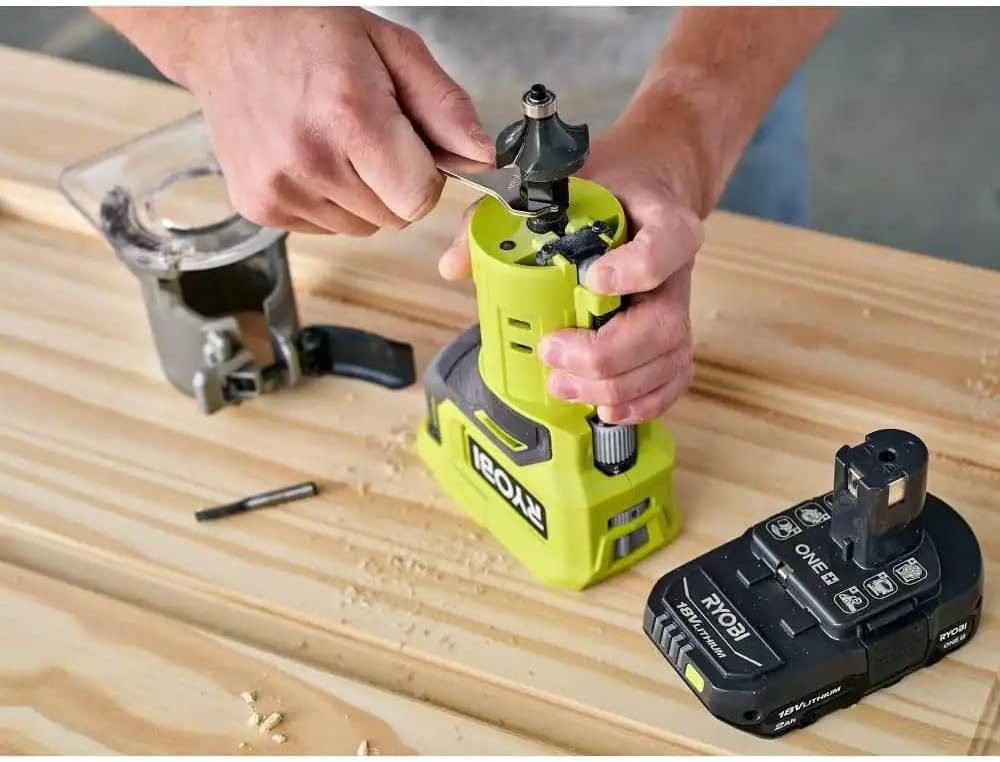
Maintenance and Care for Your Router
Proper maintenance and care of your cordless compact router are essential to ensure its longevity and optimal performance. Regular upkeep not only extends the life of your tool but also maintains its precision and safety.
This section covers routine maintenance tasks that you should perform on your cordless compact router to keep it in top condition, ensuring that every project yields the best possible results.
Routine Maintenance Tips to Extend Tool Life
To keep your cordless compact router functioning smoothly, regular cleaning and inspections are crucial. After each use, remove dust and debris from the tool, paying special attention to the motor vents and battery contacts.
Use a soft brush or compressed air to clean hard-to-reach areas. Check for any loose screws or components and tighten them as needed. Additionally, ensure that the battery is charged and stored properly, following the manufacturer’s guidelines to prevent overcharging or deep discharge.
Troubleshooting Common Issues
Familiarize yourself with common issues that might arise with your cordless compact router, such as overheating, unusual noises, or inconsistent performance. Overheating can occur if the tool is used extensively without breaks, especially on tough materials.
Allow the router to cool down periodically to prevent damage. If you notice vibrations or a decline in cutting accuracy, check the router bits for dullness or damage and replace them as necessary. Keeping spare bits and conducting regular checks will help you address these issues quickly and maintain efficient operation.
When to Replace Bits and Other Components
Router bits can wear out over time, affecting the quality of your cuts. Inspect your bits regularly for signs of wear such as dull edges or chips. Replace them when they can no longer be sharpened or if they show significant wear. Also, monitor the condition of your router’s brushes and bearings.
These components may require replacement after prolonged use to ensure that your cordless compact router continues to perform well. Following the manufacturer’s recommendations for part replacements will help you avoid unexpected tool failures and ensure consistent results.
By adhering to these maintenance guidelines, you can maximize the lifespan and efficiency of your cordless compact router. Regular care not only prevents tool failure but also guarantees that your router is always ready for whatever project comes next.
Conclusion
Gaining proficiency with a cordless small router will improve your woodworking projects greatly and provide you more flexibility and accuracy. Leveraging its full potential requires routine maintenance and the right methods. These skills and information enable you to take on a broad spectrum of imaginative and complex designs.
FAQ on Cordless Compact Router Uses
- What is the difference between a cordless compact router and a regular router?
- A cordless compact router offers the convenience of portability and is generally smaller and lighter than a traditional router, making it ideal for fine detail work and use in tight spaces. Regular routers are typically more powerful and suitable for heavy-duty tasks but require connection to a power source.
- Can I use any type of bit with my cordless compact router?
- While many bits are interchangeable, it’s important to use bits that are compatible with the speed and power of your cordless compact router. Check the manufacturer’s specifications for recommended bit types and sizes to ensure optimal performance and safety.
- How long does the battery last on a cordless compact router?
- Battery life varies depending on the model and the type of work being done. On average, you can expect to get about 20 to 30 minutes of continuous use. For longer projects, consider having a spare battery charged and ready.
- Is a cordless compact router suitable for professional woodworking?
- Yes, a cordless compact router is suitable for professional use, especially for tasks requiring detail and precision. However, for larger, more demanding jobs, a more powerful mains-powered router might be necessary.
- How do I maintain the accuracy of cuts with a cordless compact router?
- Maintain accuracy by ensuring your router bits are sharp and the router’s base is secure and not wobbling. Use jigs or guides when necessary to maintain a consistent path, and practice your technique on scrap material to gain consistency.
- What safety precautions should I take when using a cordless compact router?
- Always wear appropriate safety gear, including eye protection and hearing protection. Ensure your work area is clean and well-lit. Never make adjustments to the router while it is powered on, and be mindful of the bit’s rotation to maintain control during cutting.
- How often should I clean my cordless compact router?
- Clean your router after each use to remove dust and debris, which can accumulate and affect the tool’s performance. Pay special attention to the air vents and battery compartment.
- Can I use a cordless compact router on materials other than wood?
- Yes, with the appropriate bits, a cordless compact router can be used on various materials, including plastics and soft metals. Always check the manufacturer’s guidelines for compatible materials to ensure safe and effective use.








